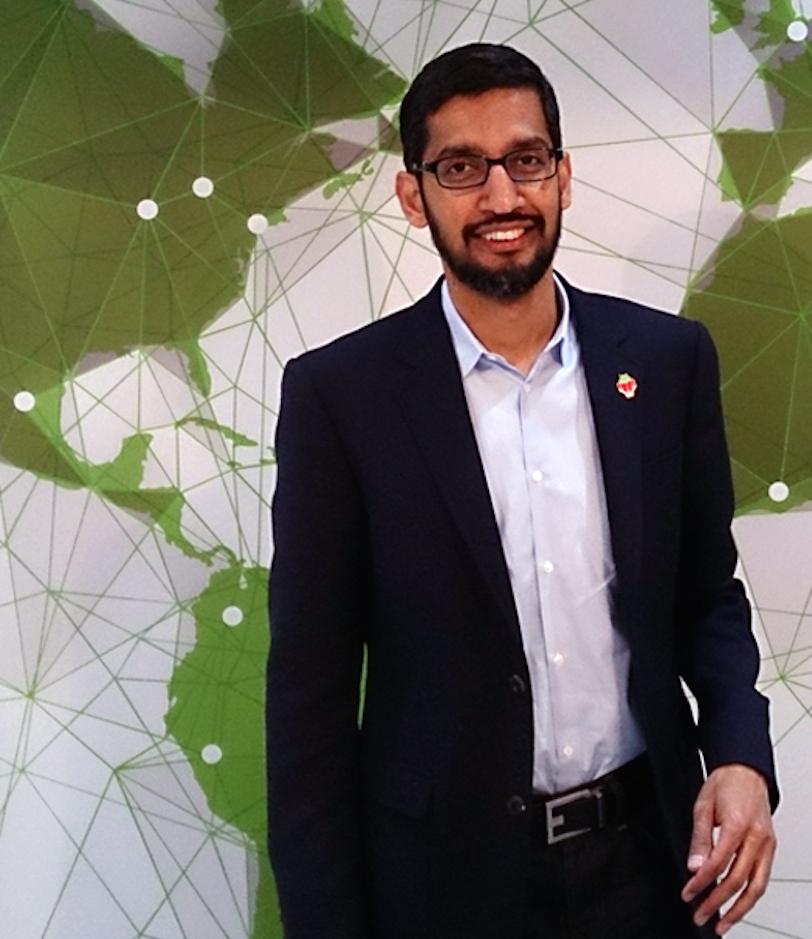 NEWS
NEWS
 NEWS
NEWS
 NEWS
NEWS
Google parent company Alphabet Inc. surprised investors today with first-quarter earnings that came in shy of expectations, knocking its stock down about 6 percent in trading after the market closed.
Although Alphabet posted revenues of $20.3 billion, up 17 percent and very nearly at what analysts expected, profits fell short. Operating profits before certain expenses such as stock compensation rose 21 percent, to $6.8 billion, or $7.50 a share. But Wall Street had forecast a $7.96-a-share profit.
Google has been spending heavily on new businesses ranging from data centers for its budding cloud business to “moonshots” in life sciences, home automation, virtual reality and self-driving cars. Those expenses weighed on profits, despite a drive over the past year to cut back on some far-flung projects such as robotics. Alphabet also hired more than 9,000 additional people from a year ago, standing now at 64,115.
The “other bets,” as Alphabet calls the moonshots, which include Nest in home automation products and Verily in life science research, posted revenues of only $116 million and an operating loss of $802 million, up from $633 million a year ago.
Off the operations front, foreign currency fluctuations and interest expenses also had an impact on profit. Net foreign currency exchange losses, for instance, rose sharply to 186 million, from $62 million a year ago.
Among the most significant expenses, however, were data centers, Chief Financial Officer Ruth Porat said on the earnings conference call. Capital spending was $2.4 billion, mostly on data centers as well as investment in Google’s Fiber broadband business, though overall that was down from a year ago. Porat said Google would continue to “rationalize” products to save expenses, but she also said some projects such as cloud and fiber that Google believes have great promise will get even more investment.
“We have just scratched the surface of what’s possible,” Google Chief Executive Sundar Pichai (pictured) said on the call.
Google’s ad business profitability also was pressured by a couple of ongoing changes in online advertising. First, the shift to consumers accessing search on mobile means lower prices because advertisers can’t track results as well. Google also needs to pay more to partners to draw mobile traffic. Likewise, as more advertisers engage in automated or “programmatic” ads sent to Google’s website partners, Google has had to pay more to generate traffic.
Still, even as Google spends to stretch into new markets, its ad business continues to post significant growth, facing only one significant rival in the $60 billion online advertising market–Facebook, which reports first-quarter earnings Apr. 27.
Revenues on Google’s own websites, such as its search engine and YouTube, rose 20 percent from 2015 to $14.32 billion, up 20% year-over-year, while revenues from its network of more than 2 million websites where it syndicates ads rose only 3 percent to $3.7 billion. Mobile ad revenues were the key contributor to growth, thanks partly to new ad formats introduced last fall, as well as “very significant” growth of YouTube ad revenues.
Another key indicator, the number of paid clicks, rose 29 percent from a year ago, though the cost per click declined by 9 percent–and by 12 percent on Google’s own sites.
“Revenue growth trends seem pretty clear with Google continually reinforcing its co-hegemonic position alongside Facebook,” Brian Wieser, an analyst with Pivotal Research Group, wrote in a note to clients.
Marketers continue to see Google as their prime ad partner. Topher Burns, group director of distribution strategy at the digital agency Deep Focus, said marketers are especially interested in YouTube’s expanding efforts to provide more professional video. In addition, Burns said he expects YouTube to announce a bigger foray into live video at presentations to marketers in New York next month.
“Nothing has happened this quarter that changed their position as the advertiser of choice,” said Patrick Moorhead, president and principal analyst at Moor Insights & Strategy.
One of the most significant and growing set of costs is Google’s recently expanded cloud computing platform, offering storage, computing, and other services to other companies. Analysts believe Google will have to spend big upfront to build out its cloud infrastructure in advance of likely revenues, especially since it trails far behind cloud leader Amazon Web Service, Microsoft Azure and IBM.
Already, it’s accelerating data center construction for the cloud, including two new ones announced last month in Oregon and Japan and plans for 10 more around the world by the end of 2017. Credit Suisse this week said Google could spend as much as $3 billion in additional capital expenditures on the cloud over the next two years, though the firm added that a successful Google cloud service could boost the stock significantly in the next few years.
Pichai said the decision to hire Diane Greene, former cofounder and CEO of VMware, last November, and to unify its cloud computing efforts under her has already started to pay off. Last month’s cloud platform conference for developers also has driven “the quantity and quality of our enterprise conversations have risen to a whole new level,” he said. “We are getting a lot more inbound [inquiries from potential customers] and deeper conversations.”
Google’s cloud revenues, estimated at about $500 million last year, could grow fairly quickly by some predictions. Morgan Stanley forecasts cloud revenue will top $2 billion by the end of next year.
Photo by Maurizio Pesce
Support our mission to keep content open and free by engaging with theCUBE community. Join theCUBE’s Alumni Trust Network, where technology leaders connect, share intelligence and create opportunities.
Founded by tech visionaries John Furrier and Dave Vellante, SiliconANGLE Media has built a dynamic ecosystem of industry-leading digital media brands that reach 15+ million elite tech professionals. Our new proprietary theCUBE AI Video Cloud is breaking ground in audience interaction, leveraging theCUBEai.com neural network to help technology companies make data-driven decisions and stay at the forefront of industry conversations.